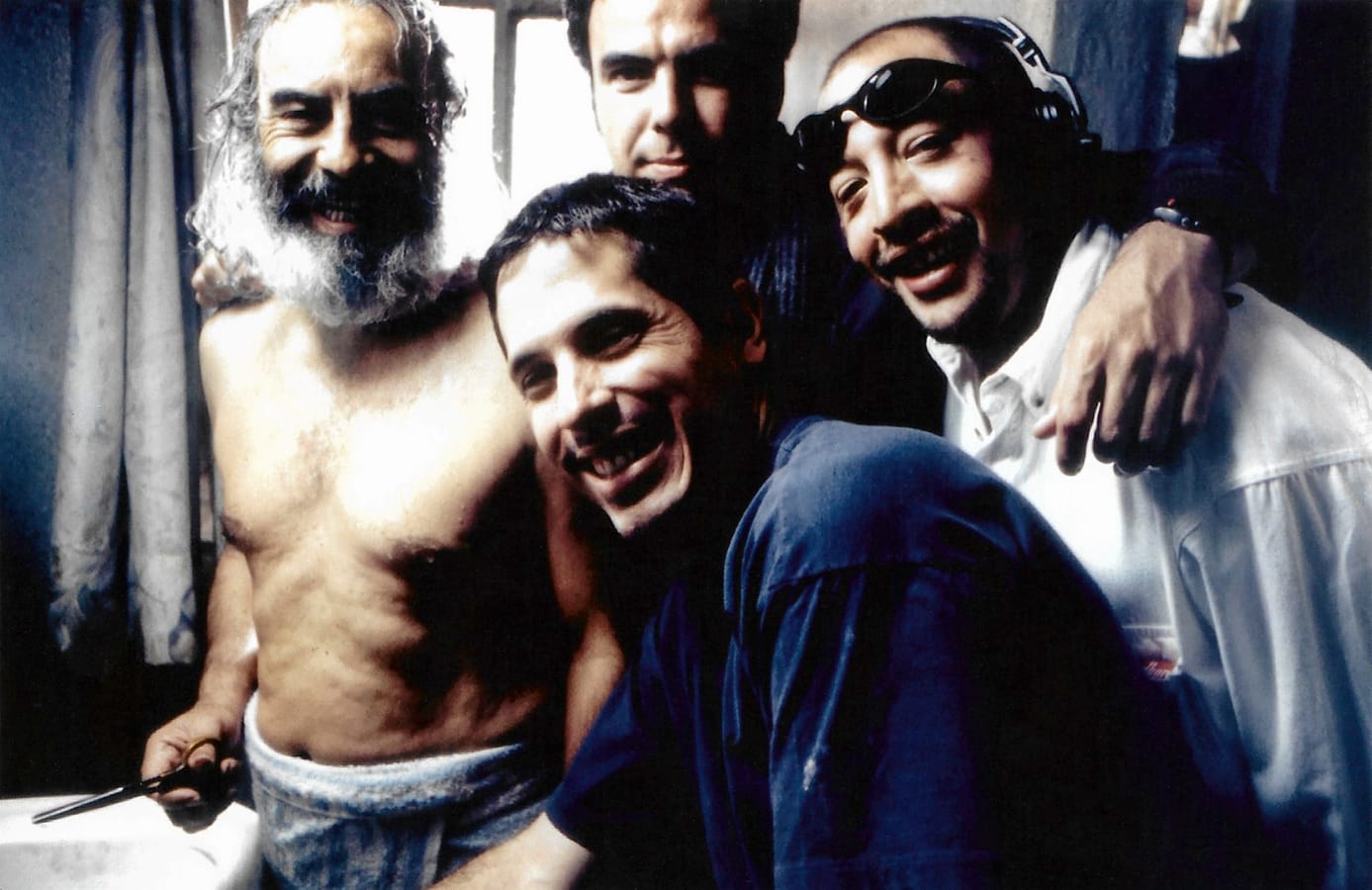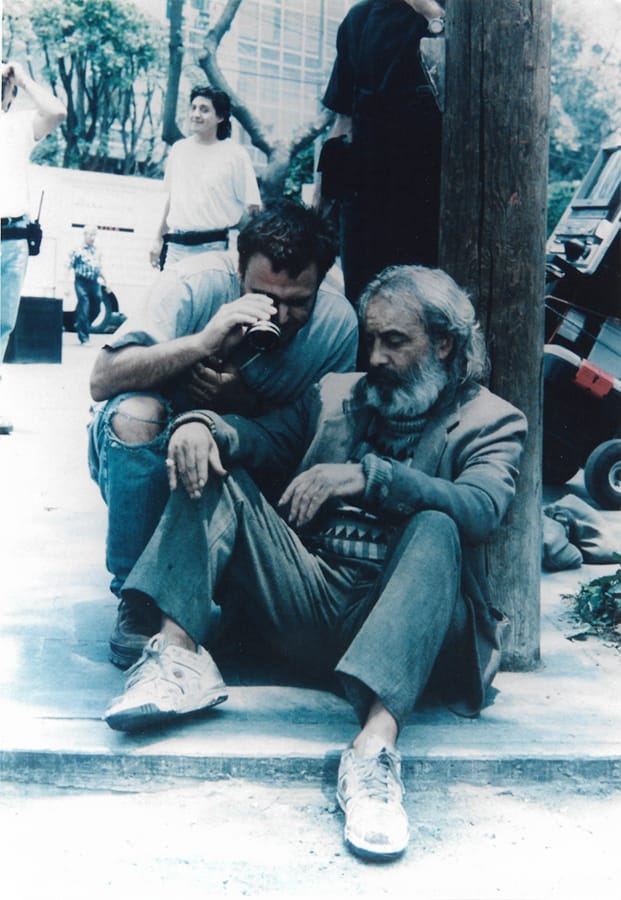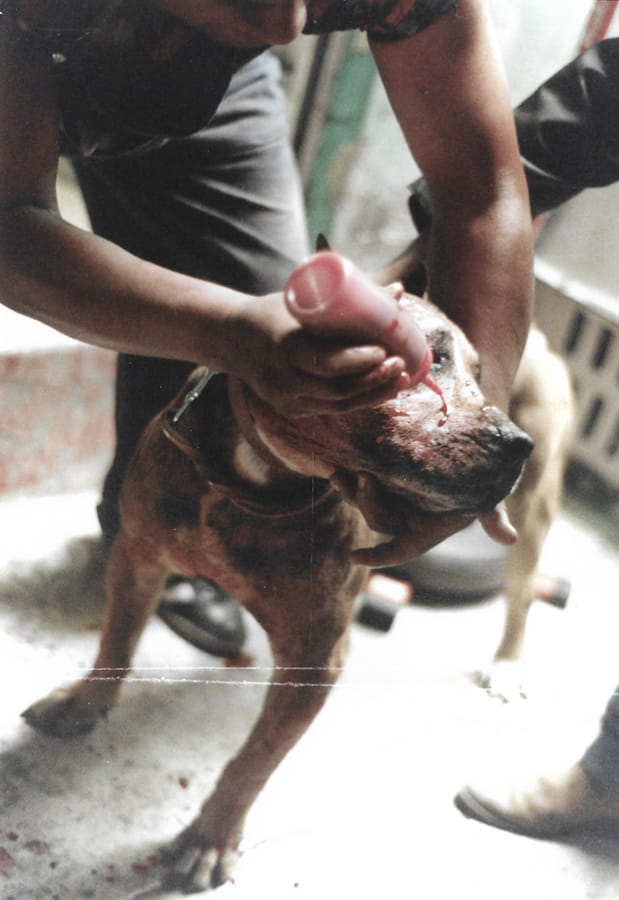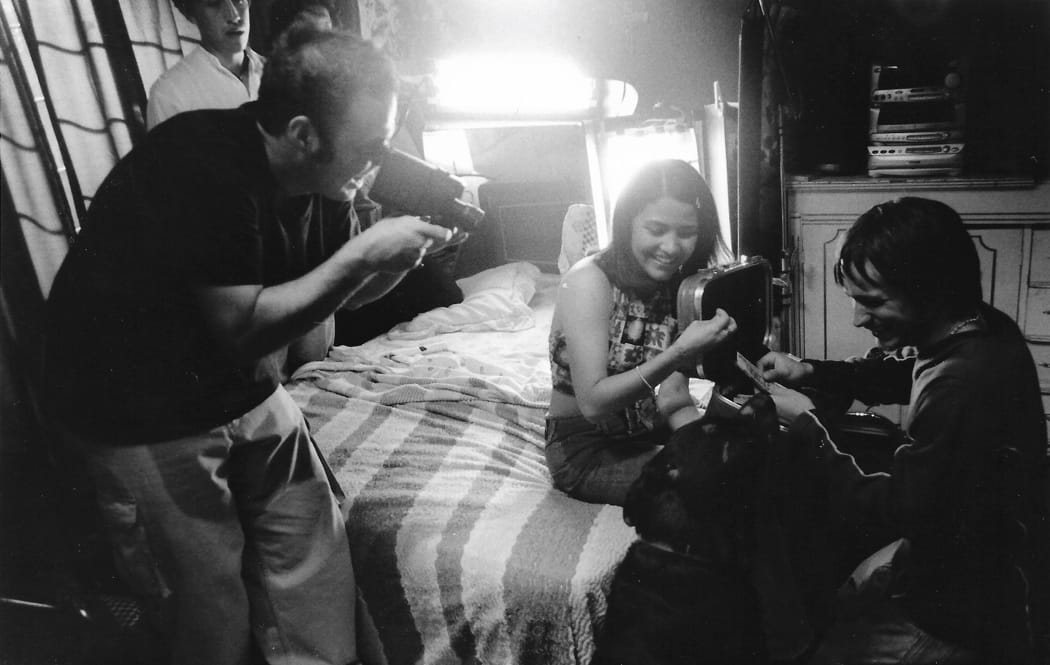Amores perros: Force of Impact

One day in the late
1990s, when I was a young staff member at an art and media magazine, my boss
asked me to interview an esteemed creative director of an ad agency. A few
months earlier, that same magazine had dedicated an issue to the newly
resurgent Mexican advertising industry and had asked a number of agencies to
help compile a list of the top creatives in the country. Strangely, the name of
the man I was tasked with interviewing, who had won prizes in the field, had
not been included on that list. One of my aims was to ask his opinion about
this omission.
His name was
Alejandro G. Iñárritu, and he was well known at the time for his innovative and
playful “stingers”—station-identification announcements—for Channel 5, one of
the many stations owned by Televisa, the largest television broadcasting
company in Latin America. However, those of us who lived in Mexico City were
more familiar with another side of Iñárritu. In the mideighties, he had been a
DJ at WFM, a radio station whose on-air personalities really tried to connect
with their listeners, breaking from the rigid, solemn format of so much FM
radio at the time (in 1988, he became the station’s music director). They were
chatty and often mischievous, and they were free to play whatever they liked.
Iñárritu had a daily show that was three hours long, on which he mixed all
kinds of music, from classical to rock to tropical beats. His powerful voice
was part of the soundscape of the city.
Despite Iñárritu’s
high profile, the assignment to interview him rubbed me the wrong way. As a
film critic who was just starting out, I didn’t want to write about
advertising; I wanted to speak with the best directors of my generation. Little
did I know that this man would soon be among them.
When I arrived for
the interview, I met a person of quiet demeanor who gave deliberate, unhurried
responses. I asked him about his omission from the list. He said it was because
he and his team did not follow industry protocol. They regarded commercial
assignments as opportunities to experiment with different filmmaking
techniques, and they generally did not hold meetings with clients in order to explain their approach to a given
project. He and his team prided themselves on being accountable to no one, and
that was often not appreciated by his peers in the field. Toward the end of our chat, Iñárritu told me that
he would eventually film a feature. He didn’t place a lot of emphasis on it,
though. And neither did I: I left that detail out of the interview that was
eventually published.

Three years later, on
June 13, 2000, 3,400 people attended the Mexican premiere of that feature at
the Teatro Metropólitan, one of the most famous cinemas in Mexico City. The
film, titled Amores perros, was about to alter the
course of Mexican cinema. That night, we knew only that it had been awarded the
Critics’ Week Grand Prize at Cannes—news that had generated enormous
expectations in Mexico, where audiences had been gradually turning away from
their national cinema ever since its so-called golden age had concluded at the
end of the fifties. In the decades that followed, the bureaucracy surrounding
Mexican filmmaking had grown, budgets had become limited, and the generally
lower-quality films that were made were often unable to compete with those from
other countries. Little of the cinema produced during this time reflected the
political and social changes that were occurring in a country whose moviegoing
public was increasingly eager to associate itself with what was modern.
It was amid murmurs
of anticipation, then, that those of us at the Amores perros
premiere took our seats. Finally, the lights went down and the screening began.
As I watched the opening sequence, I couldn’t help but remember how casually
Iñárritu had mentioned his desire to eventually direct a feature. This was
definitely not the work of someone who was just trying his luck. The action
kicks off at a furious pace: A car speeds down city streets, the driver’s eyes
riveted to the rearview mirror. A pickup truck is on his tail, and inside it a
man takes aim with a pistol. While he dodges other vehicles, the driver of the
car asks the passenger sitting next to him if the wounded rottweiler in the
back seat is still alive. As the pickup catches up, the driver of the car steps
on the gas, running a red light—and colliding suddenly with a white car
crossing the intersection. The driver of the white car is trapped inside,
pleading for help. The fate of the driver who caused the crash, his car’s hood
now severely damaged, is unclear.
By this time, Mexican
audiences had seen plenty of car-chase films from other countries. And Mexican
cinema boasted its own stunt tradition, in which showy crashes and cars falling
off cliffs were frequent sights. From that perspective, Amores
perros’s opening chase scene was nothing unique. But right away on that
night at the Teatro Metropólitan, we intuited that we were not seeing just
another movie—a sense that was confirmed as the accident was revealed to be a
hinge connecting three stories. If the opening is an electrifying assault on
the senses, the structure of the story, conceived by Iñárritu and screenwriter
Guillermo Arriaga, presents viewers with a mysterious and thought-provoking
juxtaposition of events. Each section of the film bears the name of an unhappy
pair. In “Octavio y Susana,” a young man from a slum (Gael García Bernal) falls
in love with his sister-in-law (Vanessa Bauche); in “Daniel y Valeria,” a
married fashion editor (Álvaro Guerrero) buys an apartment for his model
girlfriend (Goya Toledo); and in “El Chivo y Maru,” a guerrilla turned hit
man (Emilio Echevarría) seeks the forgiveness of his estranged daughter
(Lourdes Echevarría). The drivers involved in the car accident turn out to be
Octavio and Valeria, and later we see El Chivo rescuing Octavio’s rottweiler
from the scene. The crash is a metaphor for the collision of the vastly
different socioeconomic universes that all occupy the same streets in Mexico.

In Spanish, the
phrase amores perros refers to relationships that are
cursed, impossible, and foolish. In the title of Iñárritu’s movie, perros is an adjective (meaning “stubborn” or “dogged”),
but the film also reflects the word’s meaning as a noun, in its dogs, which
embody both the best and worst attributes of the human characters. The animals
also stand for loyalty, abandonment, betrayal, and redemption.
Octavio’s story
presents a character defined by a sort of essential duality: he is a
mild-mannered man who turns out to possess a killer instinct. When he decides
to run away with his sister-in-law, he makes his rottweiler, Cofi, take part in
dogfights. In a way, Cofi becomes the embodiment of Octavio’s newfound
ruthlessness. As a consequence of this transformation, Octavio commits a crime
that forces him to flee, precipitating the accident that changes the lives of
all the film’s main characters. In the second segment, Valeria’s lapdog,
Richie, mirrors her predicament. Following the accident, multiple fractures
confine her to a wheelchair, and she becomes aware of how dependent she is on
her glamorous image of herself. Daniel also worships her body, but now that she
has become imprisoned by that body, their loving relationship loses its
foundation. While Valeria recuperates, Richie falls through a hole in the
apartment floor. At night, she and Daniel hear the whimpers of their trapped
dog, reminding them of the state of their relationship.
The dog most integral to El Chivo’s story is for him both a double and a
redeemer, leading him to confront his past and recognize his own degradation.
El Chivo lives surrounded by street dogs; they are the only recipients of the
affection he has repressed for years. He does not hesitate to take in Octavio’s
injured rottweiler and nurse him back to health. But Cofi—like El Chivo—has
been trained to annihilate. Out of habit, he kills the rest of El Chivo’s
canine “family.” The hit man’s first impulse is to shoot Cofi, but he sees
himself reflected in the dog. He forgives him and, in so doing, forgives
himself. He leaves behind his mercenary life and, in the film’s closing image,
walks with the dog toward the horizon.

Courtesy of Alejandro G. Iñárritu









